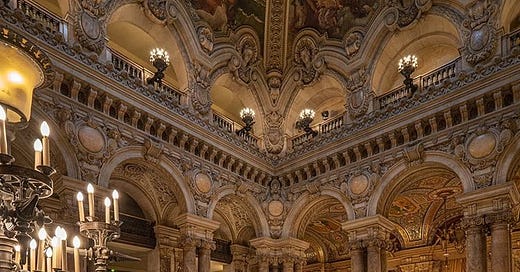Satoshi's Sidewalk #13: Material Wealth
Materials used for buildings and public spaces are indicators of a community's wealth.

Building beautiful ain’t cheap. But it ain’t a poor decision in the long run. The same cannot be said for not building beautiful, which is a cost effective way to build but not an effective way to build to last.
Individuals accumulating wealth in the form of capital and savings in a society is reflected in that society’s built environment. Meager shops built with local stone by skilled masons, adding a modest amount of ornate details to please the eye. Parks lush with greenery and constantly manicured to perfection. Public buildings and masterworks built with an eye towards eternity. Cobblestone streets. Dedicated sidewalks. Monumental works of art. All designed to entertain the local populace with beauty, provide a plethora of spaces, and to be cared for and passed down through posterity.
Cities don’t magically start this way. Cities are boot-strapped upwards from a single Main Street of wooden shacks with a slick, muddy thoroughfare. A small and cheap bet for a new future. Wealth must be created over time. As the pool of wealth increases over time the built environment is a reflection of the denizens at large. Fiat societies may be wealthy, but such wealth is concentrated to the Cantillonaires, not as a free market rewards individuals for value creation in serving their fellow man.
There is no shame in starting small - and cheap. Rome was a collection of huts long before the Colosseum was built. No different than the farms on Manhattan as a precursor to the Empire State Building. In both cases the cities boot-strapped their way to wealth. Buildings with few adornments were built to be financially productive. Not majestic but at least not displeasing. Most importantly, wealth was created.
Wealth must continue to grow before nicer or better materials and more complex methods can be used. New “cities” begin with basic wood structures, then buildings of bricks or loose stones, then buildings of quarried stone, then of marble, then of steel. And on, and on. The tech tree of materials and methods opens up as wealth increases.
Each new material used in buildings allows for more intense productivity per plot of land. The one-story wood shack dry goods store is no match for the mid-rise stone and steel mixed use building. However the mid-rise can only exist with a requisite amount of wealth to maintain the building and surrounding infrastructure of streets, sidewalks, lamp posts, parks - you get the idea. The wood shack needs much less, and the supporting infrastructure is de minimus. (To those following along, this is how you pay for streets - not roads. Take the train instead.)
Creating capital and savings is most effectively done and, arguably only possible in the long run, with a sound money. Wealth cannot be created with easy money but it distributed to those in accordance to their proximity of the treasury. Easy money is the antithesis of wealth creation. Sound money transports the value created by an individual through time to prevent loss of their wealth, whereas value stored in easy money crumbles and falls away like a clump of drying sand.
You wouldn’t build your Citadel on sand. Don’t build you wealth on it either.



